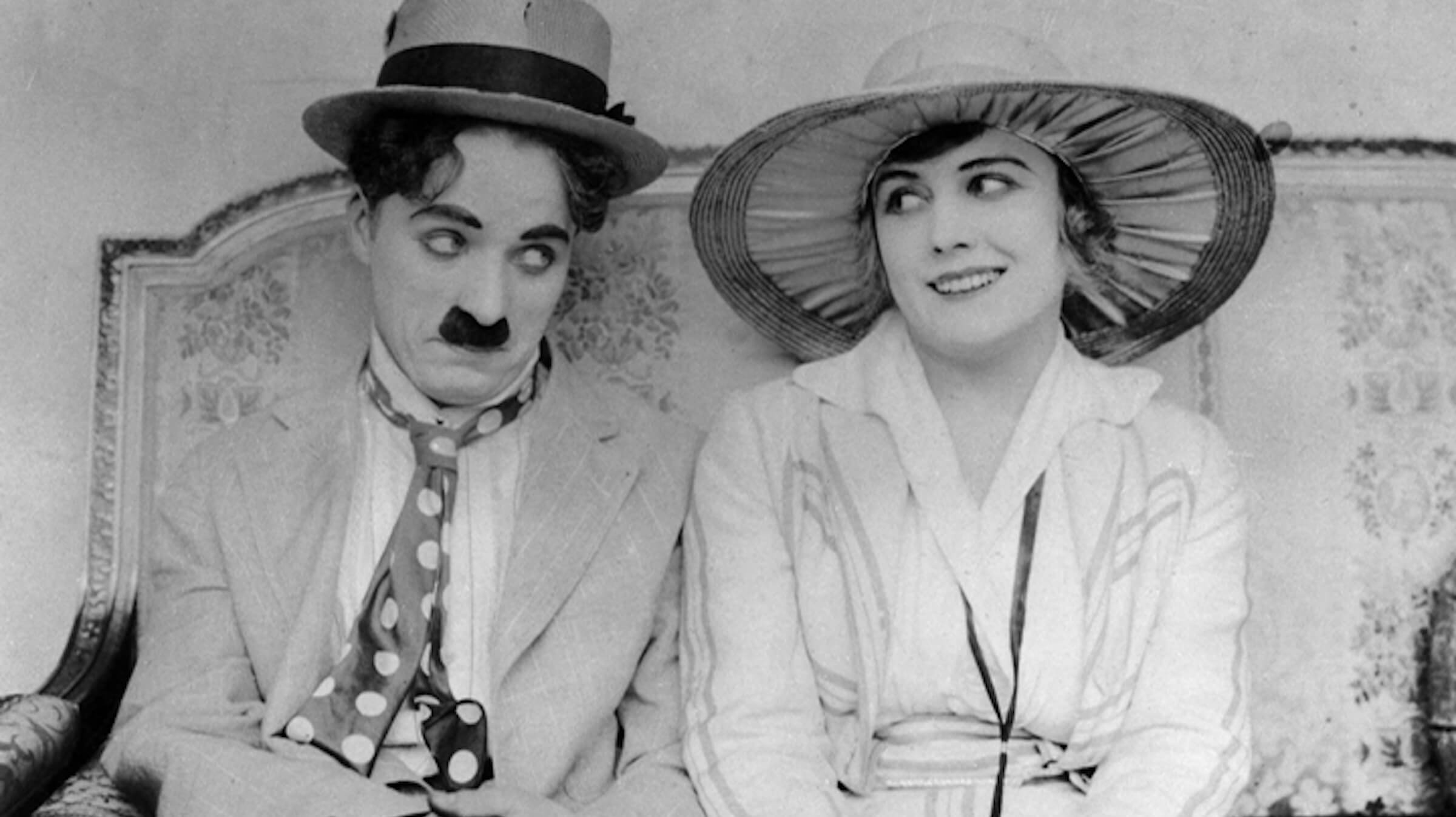THE VAGABOND (1916)
Director Charles Chaplin Cast Charles Chaplin (Street musician), Edna Purviance (Gypsy drudge), Eric Campbell (Gypsy chief), Lloyd Bacon (Artist), Charlotte Mineau (Mother) Producer Henry P. Caulfield Scenario Charles Chaplin, Vincent Bryan, Maverick Terrell Photography William C. Foster, Roland H. Totheroh Technical Director Edward Brewer Property Master George Cleethorpe
EASY STREET (1917) pictured above
Director Charles Chaplin Cast Charles Chaplin (Tramp), Edna Purviance (Mission worker), Eric Campbell (Bully of Easy Street), Albert Austin (Minister), James T. Kelly (Missionary) Producer Henry P. Caulfield Scenario Charles Chaplin, Vincent Bryan, Maverick Terrell Photography Roland H. Totheroh, George C. Zalibra Technical Director Edward Brewer Property Master George Cleethorpe
THE CURE (1917)
Director Charles Chaplin Cast Charles Chaplin (Inebriate), Edna Purviance (Lady), Eric Campbell (Gentleman with gout), Albert Austin (Spa attendant), Henry Bergman (Masseur) Producer Henry P. Caulfield Scenario Charles Chaplin, Vincent Bryan, Maverick Terrell Photography Roland H. Totheroh, George C. Zalibra Technical Director Edward Brewer Property Master George Cleethorpe
By 1916, just two years after appearing in his first motion picture, Charles Chaplin had become the most famous entertainer in the world. Buoyed by the enormous success of the comedies he had made for for the Keystone Film Company and later the Essanay Film Manufacturing Company, he was offered the largest contract ever extended to a motion picture star—$670,000 for a single year’s work—to make 12 two-reel comedies at Mutual Film Corporation. For Mutual, Chaplin produced what many film historians believe to be his best works. The Mutual-Chaplin Specials were Chaplin’s laboratory, offering unprecedented access to the inner workings of a great cinema pioneer.
The Vagabond features the Tramp as a street musician who falls in love with and saves a gypsy girl forced into slavery by a cruel gypsy chief and his caravan. Chaplin’s third Mutual production, it represents an important step in his career, as the film integrates pathos with the comedy.
Strains of The Vagabond appear in many of Chaplin’s later films. The film’s ambiguous ending regarding Charlie’s future with the girl foreshadows Charlie’s future relationship with Jackie Coogan in The Kid (1921). The cruel gypsy chief is the precursor of the cruel stepfather of The Circus (1928). The scenes in the film of Charlie as the violinist (particularly Charlie, in a musical frenzy, falling into a tub of water) anticipate Limelight (1952). The Vagabond clearly shows Chaplin’s development of the film elements that he employed throughout his career, particularly the blending of comedy and drama.
Chaplin’s last four Mutual-Chaplin Specials are among his finest works. While each of the preceding Mutual comedies took approximately one month each to make, Chaplin took more time with the last four (ten months in total), which extended his 12-month contract to approximately 18 months. For Easy Street, his ninth film for Mutual and the most famous of the 12, Chaplin ordered the first of the T-shaped street sets to be built that he used thereafter as a perfect backdrop to his comedy.
The look and feel of Easy Street evoke the South London of his childhood (the name “Easy Street” suggests “East Street,” the street of Chaplin’s birthplace). Poverty, starvation, drug addiction, and urban violence—subjects that foreshadow the social concerns in his later films—are interwoven in to what critic Walter Kerr called “an exquisite short comedy” and “humor encapsulated in the regular rhythms of light verse.” In Easy Street, the Tramp is reformed in a local mission and makes a fresh start as a police officer, but his beat is the toughest section of the city, which is menaced by a big bully.
The Cure, the tenth film in the series, is perhaps the funniest of the Mutual-Chaplin Specials. The Fred Karno sketch, The Hydro, set in a hydrotherapy clinic, partly inspired its setting. Chaplin drew further inspiration from the Los Angeles Athletic Club where he was living at the time and where the idea of a health spa first occurred to him. The wrestling bouts in the gymnasium of the Athletic Club captured Chaplin’s imagination and inspired the famous scene in which Charlie wrestles the masseur.
Chaplin delayed the completion of the film because of his quest for perfection. Outtakes survive showing that the film began quite differently, with Chaplin intending to play a bellman and later a spa attendant in a health resort before settling on the inebriate character taking the water cure. Chaplin further delayed production when he caught a chill after filming some of the water scenes.
Chaplin’s use of dance in The Cure recalls the tableaux vivants, a popular feature of many British music-hall programs. In the changing room, Charlie assumes several poses in his swimsuit as the curtains open and close before he dances to the pool.
Chaplin wrote in his autobiography, “Fulfilling the Mutual contract, I suppose, was the happiest period in my career. I was light and unencumbered, 27 years old, with fabulous prospects and a friendly, glamorous world before me.” Chaplin had such fondness for the Mutual-Chaplin Specials because, in many ways, the films served as a foundation for all that followed in his remarkable career. Chaplin’s prior films, although wonderful in their time, failed to display the cinematic genius that came to be called Chaplinesque—the blending of comedy, pathos, and social commentary into a single narrative whole.
© 2014 Jeffrey Vance
Presented at The Little Tramp at 100 with live music by Jon Mirsalis

